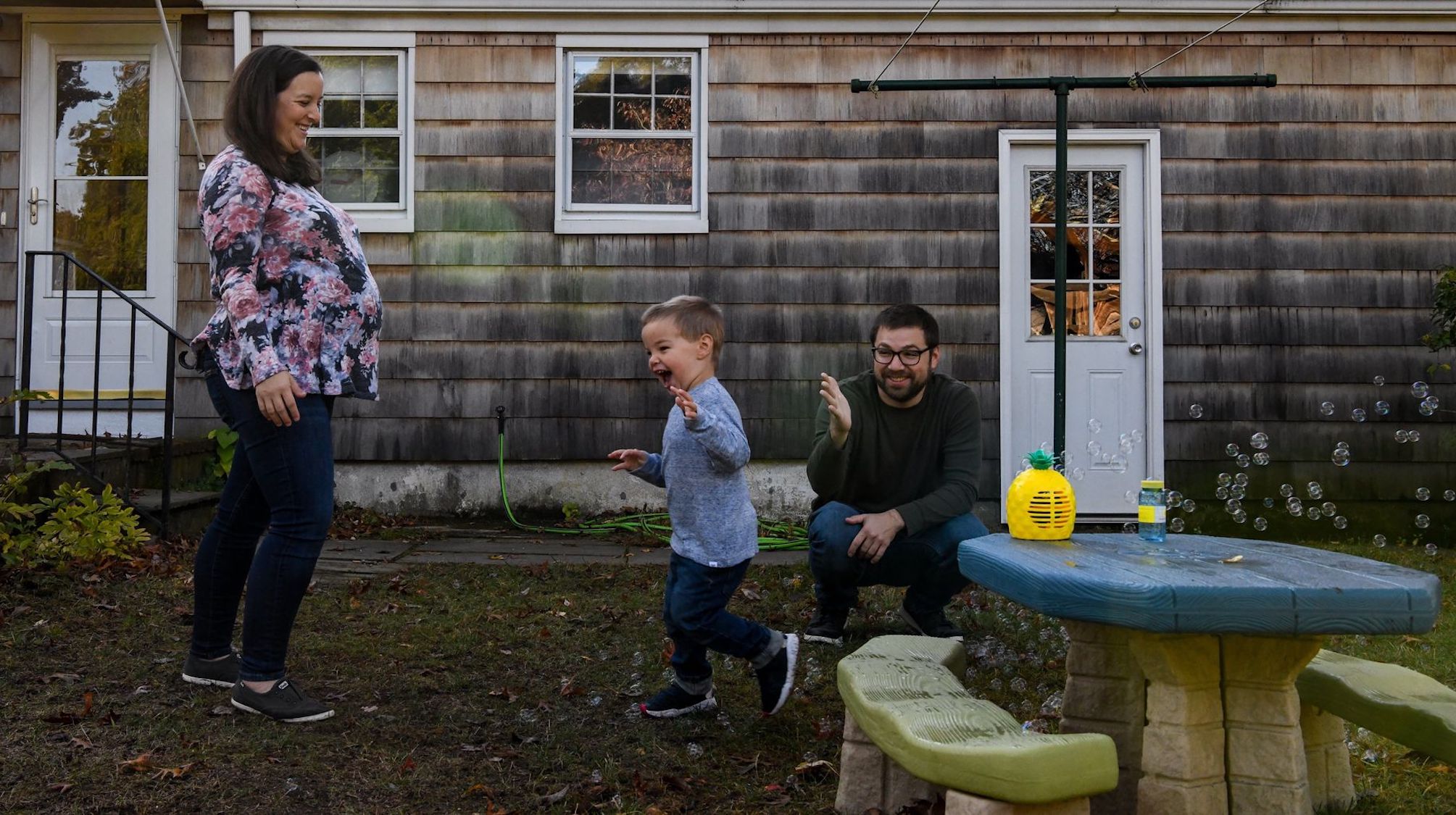
Desiree Rios for The Wall Street Journal
Harry Wolff, a software-engineering manager who lived in Manhattan’s Stuyvesant Town neighborhood complex, was already planning to move to Connecticut with a second child on the way. Covid-19 accelerated that departure.
His ability to work remotely eased concerns about a longer office commute from the suburbs. Then, after struggling to find outdoor play space in New York City for his 2-year-old son, his mind was made up. In June, Mr. Wolff moved his family to a three-bedroom house in Fairfield, Conn.
“Almost all of our friends have left the city,” he said, adding that many of them also were planning to move in the next few years. “It’s sad because there’s no celebration of the departure. It’s almost like a slow slink away.”
The pandemic has led many New York City residents to uproot their lives in search of more spacious living quarters or cheaper rent. Among them are parents with young children. Many already were dreaming of tree-filled backyards and highly rated public-school systems in the suburbs when the pandemic expedited their decision to move.

Desiree Rios for The Wall Street Journal
Now, with a busy summer and fall buying season winding down, analysts are trying to gauge the persistence of the migration and its lasting impacts on the city’s housing and economy.
“The stereotypical scenario is that a young professional couple starts having kids and then they move out to the suburbs,” said Jonathan Miller, president of the appraisal firm Miller Samuel. “You took what would be a natural trend and compressed five years into about three months of outbound migration.”
This wave of selling has contributed to a glut of properties in a number of New York City neighborhoods and weighed on home prices. In August, total sales inventory across the five boroughs reached its highest level for data going back to 2010, according to real-estate listing company StreetEasy.
“You took what would be a natural trend and compressed five years into about three months of outbound migration.”
New signed contracts in Manhattan decreased 31% year over year for the month of August, according to Miller Samuel. Larger properties like two- to four-bedroom homes may be the most affected if families decide to leave New York rather than purchase more space, said Danielle Hale, economist at Realtor.com. (News Corp, owner of The Wall Street Journal, also operates Realtor.com under license from the National Association of Realtors.)
Meanwhile, these former city dwellers have sparked bidding wars in places like Long Island and Westchester County, N.Y. They have helped revive housing markets from Greenwich, Conn., to South Orange, N.J.
“These houses are not lasting a week,” said Jared Kaliner, an Upper East Sider who has been looking at homes around Montclair, Livingston and Millburn, N.J., for his family of three.
Maria Doulis, vice president of the Citizens Budget Commission, a nonpartisan fiscal watchdog, said the exodus of families could hurt the city’s tax base and make it harder to maintain services.
“Some of the calculus is changing for families,” said Ms. Doulis. “We need more people to be in the city to keep our city growing and our economy thriving. Parents who choose to raise children here are part of that ecosystem.”
Fewer families with small children, however, could create more buying opportunities for young New Yorkers and easier entry for children into the city’s competitive schools. Some neighborhoods in the boroughs have even become more popular during the pandemic, like in Brooklyn, where August sales rose 87%.
Still, some people who left the city temporarily aren’t coming back. For Jonathan Wasserstrum, chief executive of commercial real-estate startup SquareFoot, a brief retreat during the initial shutdown to his father-in-law’s house in Mamaroneck, in Westchester, became a de facto move to the suburbs one year ahead of schedule.
“When we first went out there, we didn’t know that it was going to be permanent,” said Mr. Wasserstrum, who had his first child in May. Since then, it has been more practical for the new parents to stay upstate rather than return to their one-bedroom apartment in Greenwich Village.

Jonathan Wasserstrum
Some recent suburban transplants hadn’t thought much about leaving New York City until the pandemic upended much of the city’s appeal.
“Why pay 3.8% New York City tax when you don’t get the benefit of everything the city has to offer?” said Matt Hagel, chief financial officer at the meal-delivery company Freshly.
Mr. Hagel enjoyed living in Brooklyn’s Park Slope neighborhood for the past five years. Since the pandemic, he can no longer go to concerts or visit bars and restaurants around the city.
With a 2-year-old and another child on the way, he is in the process of closing on a house in his hometown of Port Washington, on Long Island.
It’s still unclear if the pandemic will ultimately result in a greater number of New Yorkers fleeing to the suburbs, or if it is simply accelerating the pace of those who were likely to move anyway.
Some former New York City residents already are imagining an eventual return. Ashley Healy, a sales executive at Getty Images, purchased a home in New Jersey’s Monmouth County and moved there in August, but misses the old neighborhood.
“When I wake up in the morning sometimes, I can’t believe I can’t go walk up and down Court Street and say ‘hi’ to my favorite business owners,” she said. “Brooklyn is in our hearts and always will be home. We look forward to getting back there someday.”
The post Young Families Are Driving the Exodus From New York City to the Suburbs appeared first on Real Estate News & Insights | realtor.com®.
source https://www.realtor.com/news/trends/young-families-are-driving-the-exodus-from-new-york-city-to-the-suburbs/
No comments:
Post a Comment